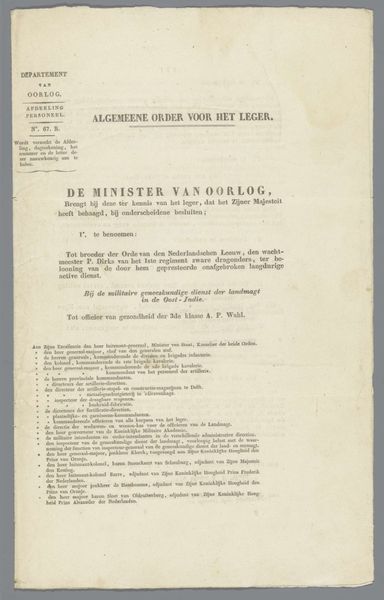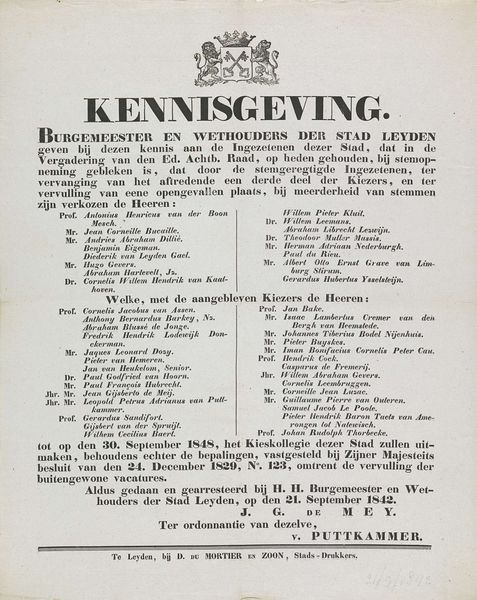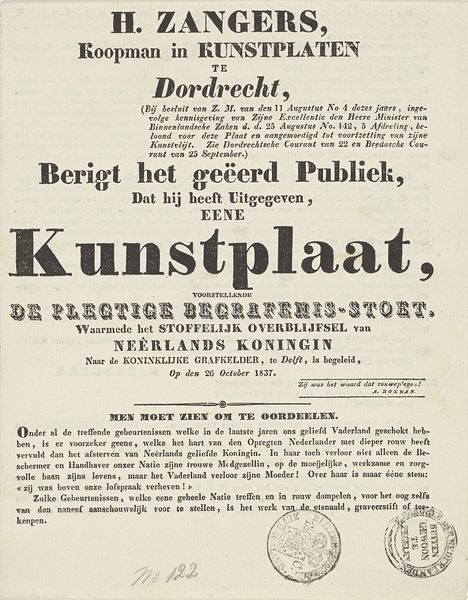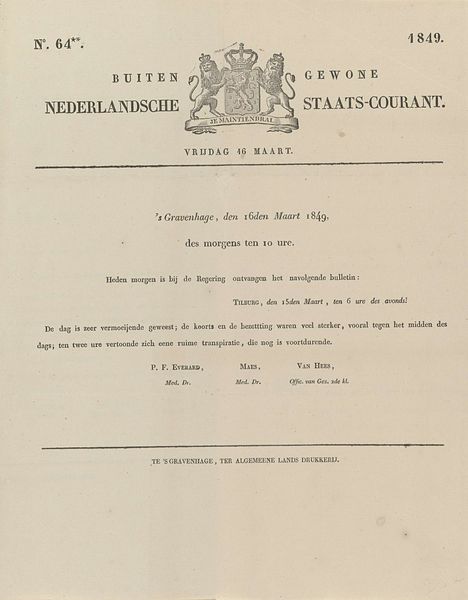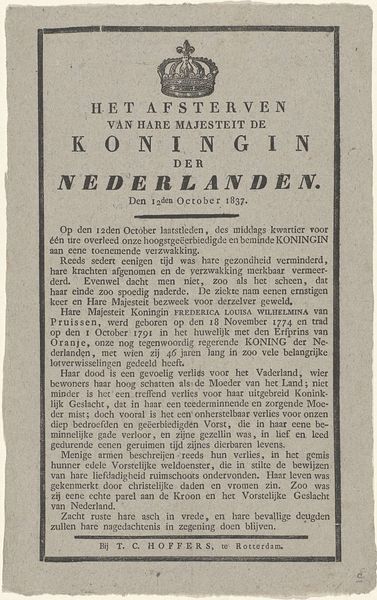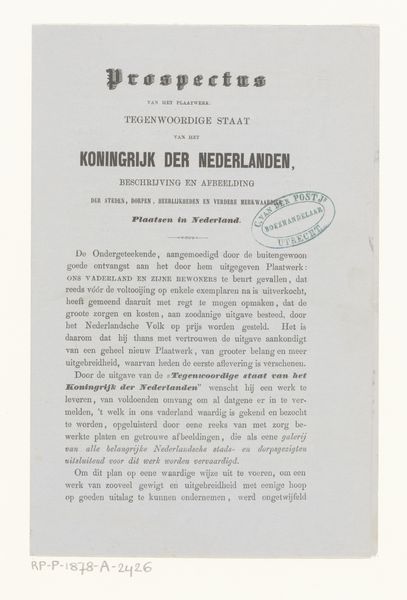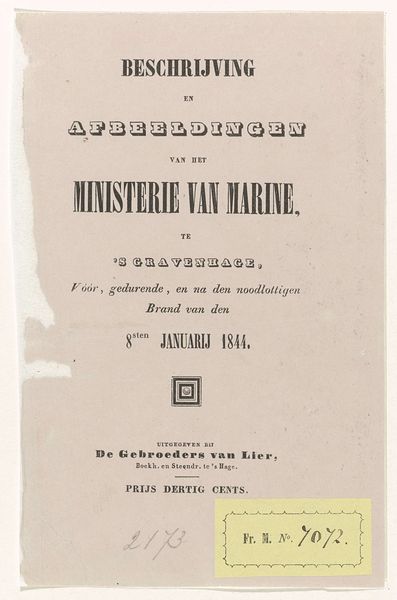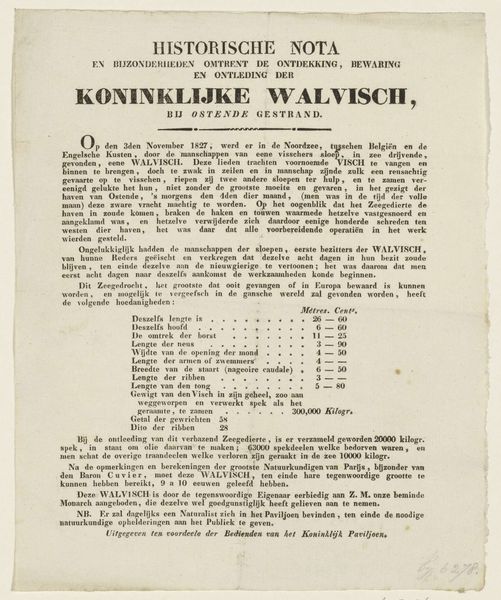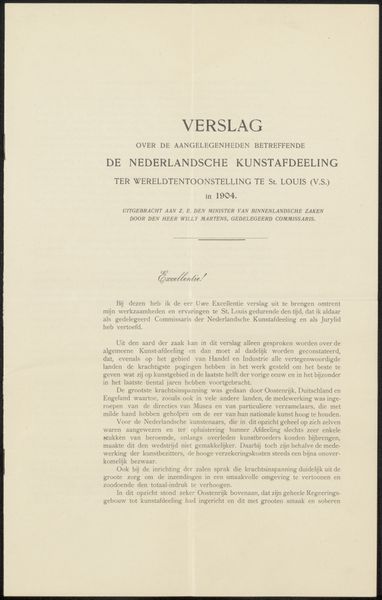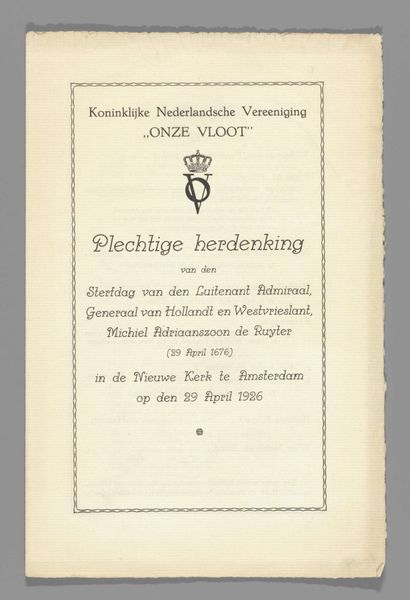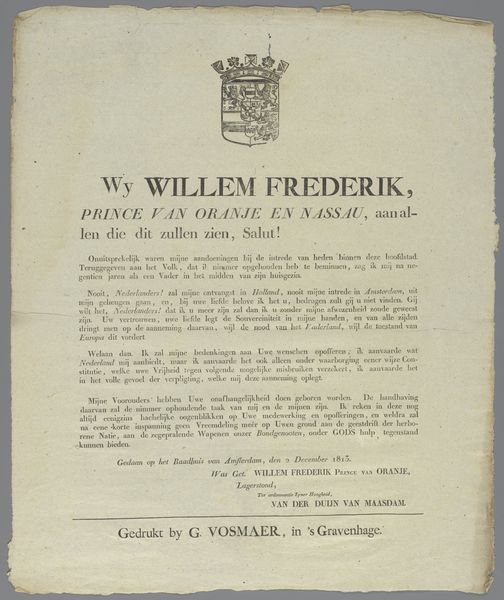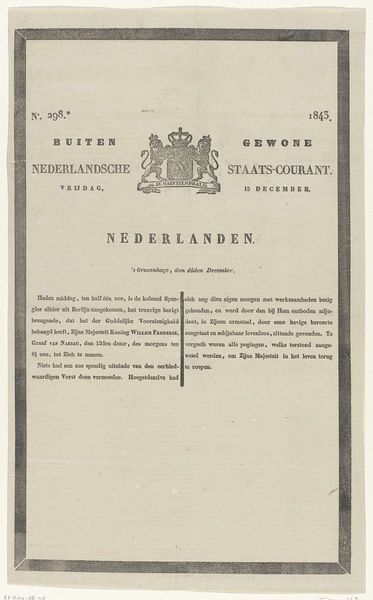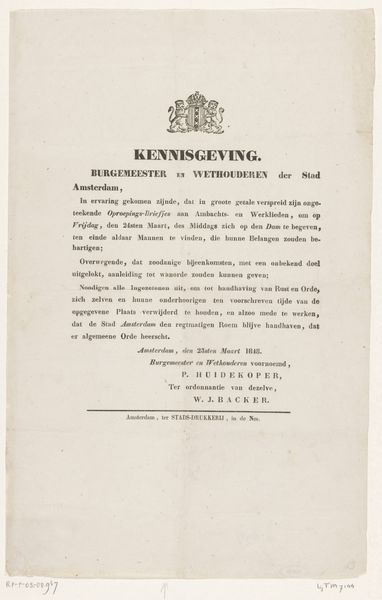
Kennisgeving van het overlijden van Willem III, koning der Nederlanden, op 23 november 1890 Possibly 1890
0:00
0:00
print, typography, poster
#
portrait
#
neoclassicism
# print
#
typography
#
poster
Dimensions: height 537 mm, width 397 mm
Copyright: Rijks Museum: Open Domain
Curator: This stark typographic poster, likely produced in 1890, announces "Kennisgeving van het overlijden van Willem III, koning der Nederlanden, op 23 november 1890," or, the announcement of the death of William III, King of the Netherlands, on November 23rd, 1890. Editor: My immediate reaction is the somber weight conveyed by its simplicity. The heavy, blocky typeface feels… official, and final. I also think of the individual worker setting that type and printing the image, probably in a great hurry. Curator: Exactly, and in this rush, the poster offers an intriguing lens into the politics of mourning and how grief was managed and disseminated within Dutch society at the time. Consider the visual rhetoric employed here. Editor: You're right, the use of simple, almost industrial materials contrasts dramatically with the grand announcement. It focuses our attention on production – how mourning becomes a public performance manufactured through the printing press. Who was the printer, and how fast was this spread? What’s the social history of these posters – tacked to buildings, passed from hand to hand…? Curator: Well, the print was likely commissioned by Mouton & Co. and its existence speaks volumes about print as a powerful medium for consolidating and disseminating national identity and messaging across social classes. Editor: It raises the question, then, of accessibility. Who would've been able to read and understand it, and what visual cues, like the crest at the top, signaled its importance to those who couldn't? Was this Dutch version alongside one in French, for instance? Curator: That’s interesting –thinking about translation and access allows us to look beyond just the event it describes and to consider it as a political tool forging collective sentiments across potentially disparate groups. Editor: In that way, a simple poster becomes a material testament to how rulers can speak – even after death. Curator: A stark reminder of the constant dialogue between power, the public, and even something as commonplace as typography.
Comments
No comments
Be the first to comment and join the conversation on the ultimate creative platform.
